Your cart is currently empty!
Tag: Traditional
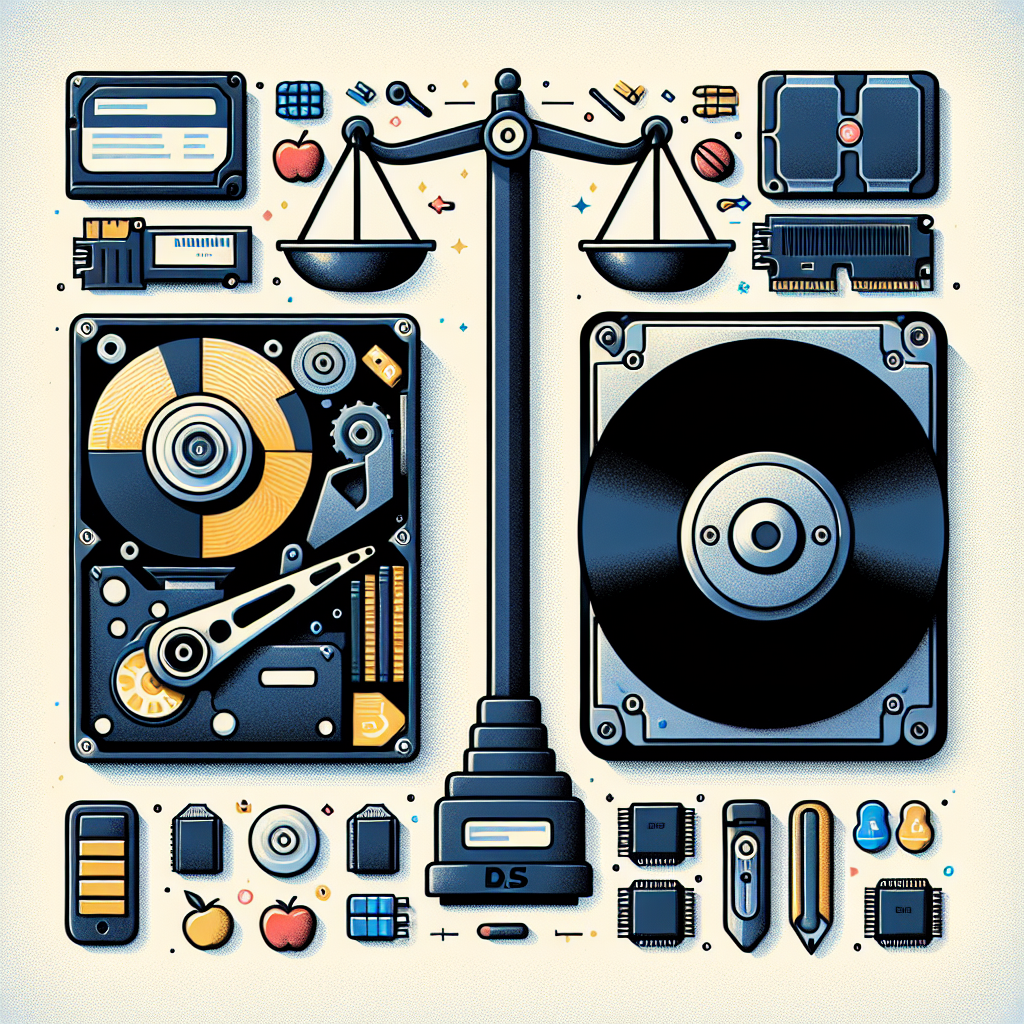
The Pros and Cons of Traditional Hard Disk Drives vs. Solid State Drives
When it comes to choosing a storage solution for your computer, you are often faced with the decision between traditional hard disk drives (HDDs) and solid state drives (SSDs). Each type of drive has its own set of advantages and disadvantages, so it’s important to weigh the pros and cons before making a decision.Let’s start with the pros of traditional HDDs. One of the biggest advantages of HDDs is their cost-effectiveness. HDDs are generally cheaper than SSDs, making them a more budget-friendly option for those on a tight budget. Additionally, HDDs offer larger storage capacities than SSDs, making them ideal for storing large files such as videos, photos, and games.
Another advantage of HDDs is their durability. HDDs are less susceptible to physical damage, such as drops or bumps, compared to SSDs. This makes them a more reliable option for those who frequently travel with their devices or have a tendency to be a bit rough with their equipment.
On the other hand, SSDs have their own set of advantages. One of the biggest pros of SSDs is their speed. SSDs are significantly faster than HDDs, offering quicker boot times, faster file transfers, and improved overall performance. This can make a big difference for those who use their computers for tasks that require high-speed data access, such as gaming or video editing.
Additionally, SSDs are more energy efficient than HDDs. Because SSDs have no moving parts, they consume less power and generate less heat, leading to longer battery life for laptops and lower energy costs for desktop computers.
However, SSDs do have some downsides as well. One of the biggest cons of SSDs is their higher cost per gigabyte compared to HDDs. This can be a major deterrent for those on a tight budget or those who need a large amount of storage space.
Another downside of SSDs is their limited lifespan. SSDs have a limited number of read/write cycles before they start to degrade, which can lead to data loss over time. While this isn’t a major concern for most users, it is something to keep in mind when considering an SSD.
In conclusion, both traditional HDDs and SSDs have their own set of pros and cons. When choosing between the two, it ultimately comes down to your specific needs and budget. If you are looking for a cost-effective option with large storage capacities, an HDD may be the best choice for you. However, if speed and energy efficiency are your top priorities, an SSD may be the better option. Ultimately, it’s important to weigh the pros and cons of each type of drive before making a decision.
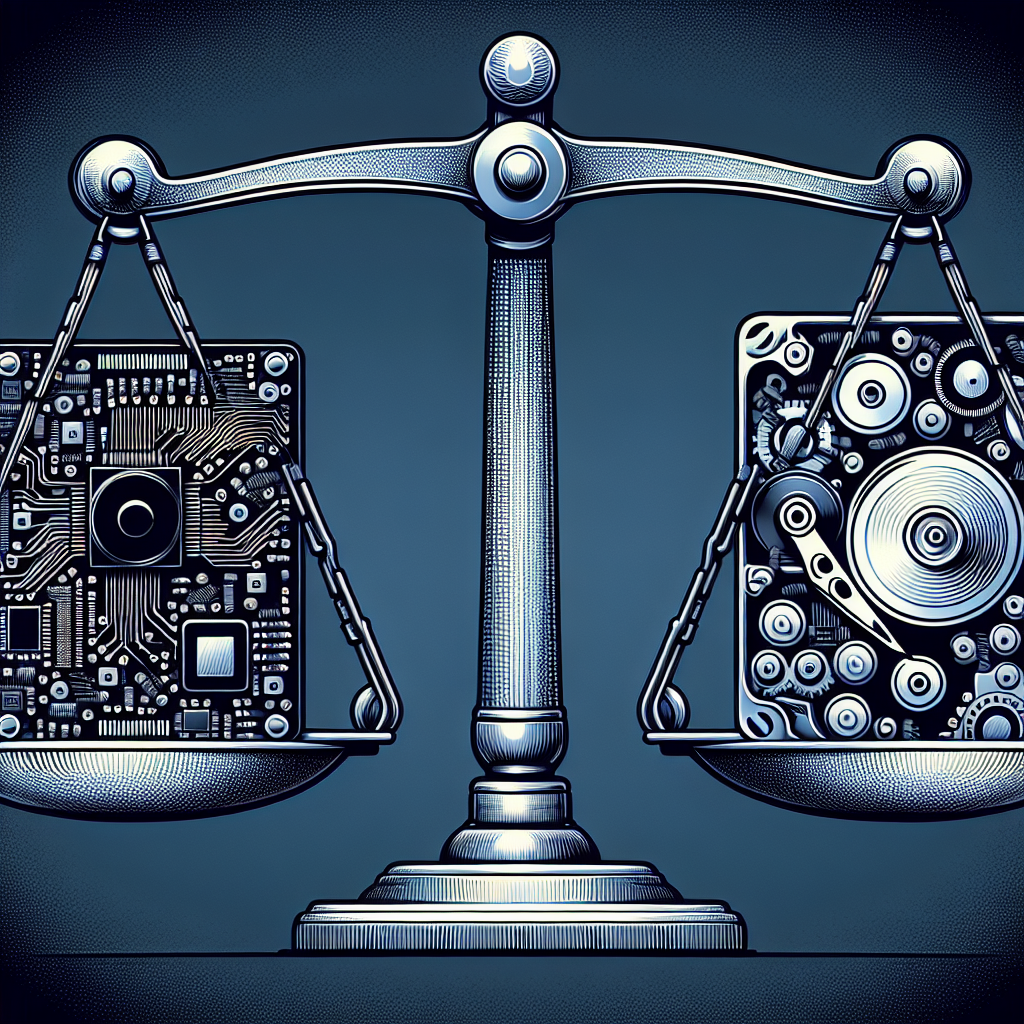
The Benefits of Solid State Drives vs. Traditional Hard Disk Drives
Solid State Drives (SSDs) have been gaining popularity in recent years due to their numerous advantages over traditional Hard Disk Drives (HDDs). While HDDs have been the standard storage solution for many years, SSDs are quickly becoming the preferred choice for both personal and professional use. Here are some of the key benefits of SSDs compared to HDDs.1. Speed: One of the most significant advantages of SSDs is their speed. SSDs use flash memory to store data, which allows for much faster read and write speeds compared to HDDs. This means that your computer will boot up faster, applications will load quicker, and files will transfer more rapidly with an SSD.
2. Reliability: SSDs are more reliable than HDDs due to their lack of moving parts. HDDs use spinning disks and mechanical arms to read and write data, which can lead to mechanical failures over time. Since SSDs have no moving parts, they are less prone to physical damage and are more durable in the long run.
3. Energy Efficiency: SSDs consume less power than HDDs, making them a more energy-efficient option for laptops and other portable devices. This can lead to longer battery life and reduced energy costs over time.
4. Noise and Heat: Since SSDs have no moving parts, they produce less noise and heat compared to HDDs. This can lead to a quieter and cooler computing experience, especially in smaller devices where space is limited.
5. Size and Weight: SSDs are smaller and lighter than HDDs, making them ideal for devices where space is a premium, such as ultrabooks and tablets. This can also make SSDs easier to install in desktop computers and servers where physical space is limited.
6. Shock Resistance: SSDs are more shock-resistant than HDDs due to their lack of moving parts. This makes them ideal for use in portable devices that may be subject to bumps and drops, as SSDs are less likely to suffer data loss or damage in these situations.
Overall, the benefits of SSDs over traditional HDDs make them a superior choice for many users. While SSDs may be more expensive than HDDs, the improved speed, reliability, energy efficiency, and durability make them a worthwhile investment for those looking for a high-performance storage solution. Whether you are a casual user looking to speed up your computer or a professional needing a reliable and efficient storage solution, SSDs are the way to go.
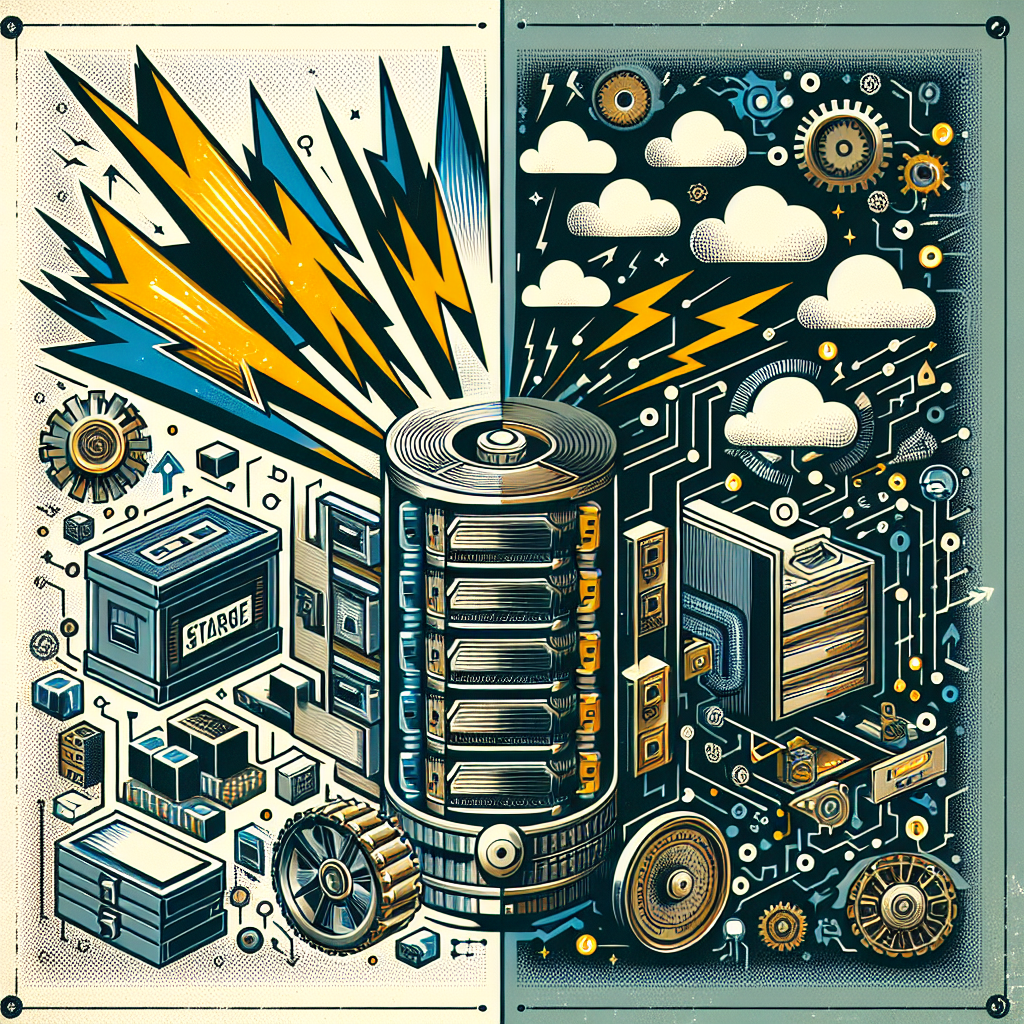
Comparing All-Flash vs. Traditional Storage: What You Need to Know
In today’s digital age, data storage is a critical component of any organization’s IT infrastructure. With the exponential growth of data being generated and processed, the need for efficient and reliable storage solutions has never been greater. Two common types of storage solutions that are widely used in the industry are all-flash and traditional storage.All-flash storage is a type of storage system that uses solid-state drives (SSDs) to store data. These drives are much faster than traditional hard disk drives (HDDs) and offer significantly higher performance. Traditional storage, on the other hand, typically uses HDDs to store data. While HDDs are cheaper than SSDs, they are slower and less reliable.
One of the main advantages of all-flash storage is its speed. Because SSDs have no moving parts, they are able to access data much faster than HDDs. This results in quicker response times for applications and faster data processing. This can be particularly beneficial for organizations that rely on real-time data analysis or need to quickly access large amounts of data.
Another advantage of all-flash storage is its reliability. Because SSDs have no moving parts, they are less prone to mechanical failures than HDDs. This can result in less downtime and a lower risk of data loss. Additionally, all-flash storage typically has a longer lifespan than traditional storage, making it a more cost-effective option in the long run.
However, all-flash storage does come at a higher cost than traditional storage. SSDs are more expensive to manufacture than HDDs, which can make the initial investment in all-flash storage prohibitive for some organizations. Additionally, while the price of SSDs has been decreasing in recent years, they are still more expensive per gigabyte than HDDs.
When deciding between all-flash and traditional storage, organizations should consider their specific needs and budget. If speed and reliability are top priorities and budget allows, all-flash storage may be the best option. However, if cost is a major concern and performance requirements are not as high, traditional storage may be a more suitable choice.
In conclusion, both all-flash and traditional storage have their own advantages and disadvantages. It is important for organizations to carefully evaluate their storage needs and budget constraints before making a decision. Ultimately, the right storage solution will depend on a variety of factors, including performance requirements, reliability, and cost.
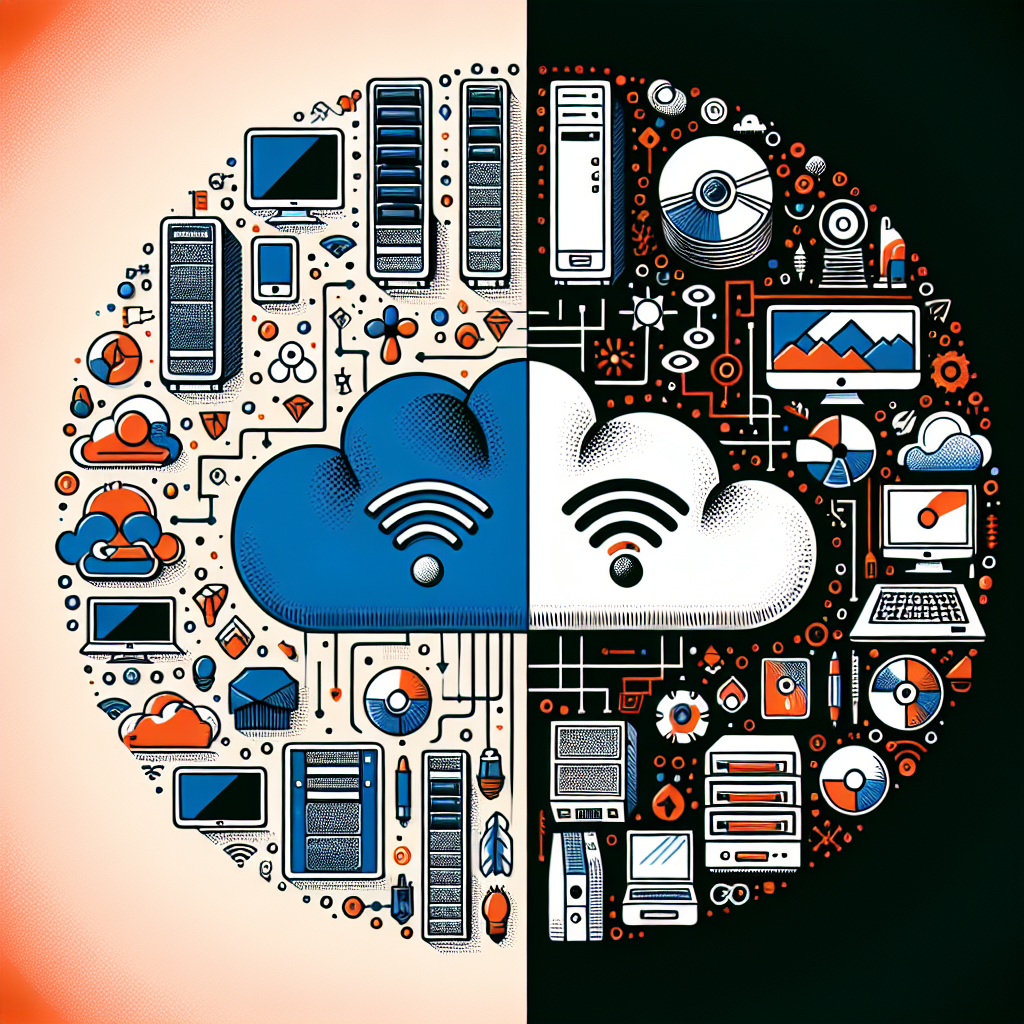
Cloud Computing vs. Traditional IT: A Comparison
Cloud computing has become increasingly popular in recent years as businesses look for more efficient and cost-effective ways to manage their IT infrastructure. But how does cloud computing stack up against traditional IT systems? In this article, we will compare the two approaches to help you determine which is the best fit for your organization.First, let’s define the two terms. Traditional IT refers to the on-premises hardware and software that businesses use to run their applications and store their data. This typically involves purchasing and maintaining servers, storage devices, and networking equipment on-site. In contrast, cloud computing involves accessing IT resources over the internet from a third-party provider. This can include services such as servers, storage, networking, and software applications.
One of the key differences between cloud computing and traditional IT is cost. With traditional IT, businesses must invest in expensive hardware and software upfront, as well as ongoing maintenance and upgrades. In contrast, cloud computing operates on a pay-as-you-go model, allowing businesses to only pay for the resources they use. This can result in significant cost savings over time, especially for small and medium-sized businesses that may not have the capital to invest in on-premises infrastructure.
Another advantage of cloud computing is scalability. With traditional IT systems, businesses must estimate their future needs and purchase hardware and software accordingly. This can lead to either underutilized resources or bottlenecks when demand exceeds capacity. In contrast, cloud computing allows businesses to easily scale up or down based on their needs, ensuring that they always have the resources they need without overcommitting.
Security is often a concern for businesses considering cloud computing. While some businesses may feel more comfortable keeping their data on-premises, reputable cloud providers have robust security measures in place to protect their customers’ data. Additionally, cloud providers often have more resources and expertise to devote to security than individual businesses, making them better equipped to defend against cyber threats.
One potential downside of cloud computing is reliance on internet connectivity. If a business’s internet connection goes down, they may lose access to critical applications and data stored in the cloud. In contrast, traditional IT systems operate independently of internet connectivity, ensuring that businesses can continue to operate even in the event of an outage.
In conclusion, both cloud computing and traditional IT have their own strengths and weaknesses. Cloud computing offers cost savings, scalability, and enhanced security, while traditional IT provides greater control and independence from internet connectivity. Ultimately, the best approach for your organization will depend on your specific needs and resources. It may be worth considering a hybrid approach that combines elements of both cloud computing and traditional IT to create a customized solution that meets your unique requirements.

All-Flash Storage vs. Traditional Disk Storage: A Comparison
In the world of data storage, two main options have emerged as top contenders: all-flash storage and traditional disk storage. Both have their own strengths and weaknesses, making it important for businesses to understand the differences between the two before making a decision on which one to invest in.All-flash storage is a relatively new technology that uses flash memory to store data, as opposed to traditional disk storage, which uses spinning disks to store information. The main advantage of all-flash storage is its speed. Because flash memory has no moving parts, data can be accessed and retrieved much faster than with traditional disk storage. This can greatly improve the performance of applications and reduce latency, making it an ideal choice for businesses that require high-speed data access.
Another benefit of all-flash storage is its reliability. Since there are no moving parts, there is less risk of mechanical failure, resulting in increased uptime and decreased chances of data loss. Additionally, all-flash storage typically requires less power and cooling, making it a more energy-efficient option for businesses looking to reduce their carbon footprint.
On the other hand, traditional disk storage still has its own advantages. One of the main benefits of traditional disk storage is its cost-effectiveness. While all-flash storage tends to be more expensive upfront, traditional disk storage can be a more budget-friendly option for businesses with smaller storage needs.
Additionally, traditional disk storage is known for its high capacity. While all-flash storage can offer impressive speeds, traditional disk storage can store much larger amounts of data at a lower cost. This can be particularly beneficial for businesses that require a large amount of storage space but do not necessarily need the fastest speeds.
In conclusion, the decision between all-flash storage and traditional disk storage ultimately comes down to the specific needs and priorities of the business. Businesses that require high-speed data access and reliability may find that all-flash storage is the best option for them, while those with budget constraints and high storage capacity needs may opt for traditional disk storage. Regardless of the choice, both options have their own strengths and weaknesses, making it important for businesses to carefully consider their storage needs before making a decision.

Vintage, Trimontware Japan Traditional Turkey oval Platter,good

Vintage, Trimontware Japan Traditional Turkey oval Platter,good
Price : 60.00
Ends on : N/A
View on eBay
conditionAre you a fan of vintage kitchenware? This Traditional Turkey oval platter by Trimontware Japan is the perfect addition to your collection! Made in Japan, this gorgeous platter features a classic Thanksgiving turkey design, making it a great choice for serving your holiday meals.
This platter is in good condition, with minimal signs of wear and tear. The vibrant colors and intricate details on the design are still intact, making it a beautiful and functional piece for your table.
Whether you’re hosting a traditional Thanksgiving dinner or just want to add a touch of vintage charm to your kitchen, this Trimontware Japan platter is sure to impress. Don’t miss out on the chance to own this lovely piece of kitchen history!
#Vintage #Trimontware #Japan #Traditional #Turkey #oval #PlattergoodUnified Storage vs. Traditional Storage: A Comparison
In today’s fast-paced digital world, data storage is a critical component for businesses of all sizes. As technology continues to evolve, the debate between unified storage and traditional storage solutions has become increasingly relevant. Both options have their own set of advantages and disadvantages, making it important for organizations to understand the differences between the two before making a decision.Unified storage, also known as converged storage, combines different types of storage technologies into a single platform. This means that organizations can store various types of data – such as file, block, and object storage – in one centralized system. This streamlines data management and simplifies storage infrastructure, ultimately leading to cost savings and improved efficiency.
On the other hand, traditional storage solutions involve separate storage systems for different types of data, such as file storage for documents and block storage for applications. While traditional storage may offer more customization options, it can be more complex to manage and maintain. This can result in higher costs and slower performance, especially as data volumes continue to grow.
One of the key benefits of unified storage is its scalability. As organizations expand and their data storage needs increase, unified storage systems can easily be upgraded to accommodate more data without disrupting operations. Additionally, unified storage solutions often come with built-in data protection features, such as data replication and snapshot capabilities, which can help organizations safeguard their valuable data.
However, traditional storage solutions may still be preferred in certain scenarios. For organizations with very specific storage requirements or legacy systems in place, traditional storage solutions may offer more flexibility and compatibility. Additionally, organizations with strict regulatory compliance requirements may opt for traditional storage solutions that provide more granular control over data management and security.
In conclusion, the choice between unified storage and traditional storage ultimately depends on the specific needs and priorities of each organization. While unified storage offers simplicity, scalability, and cost savings, traditional storage solutions may still be a better fit for organizations with complex storage needs or specific regulatory requirements. Regardless of the choice, it is important for organizations to carefully evaluate their storage options and choose a solution that aligns with their long-term business goals.
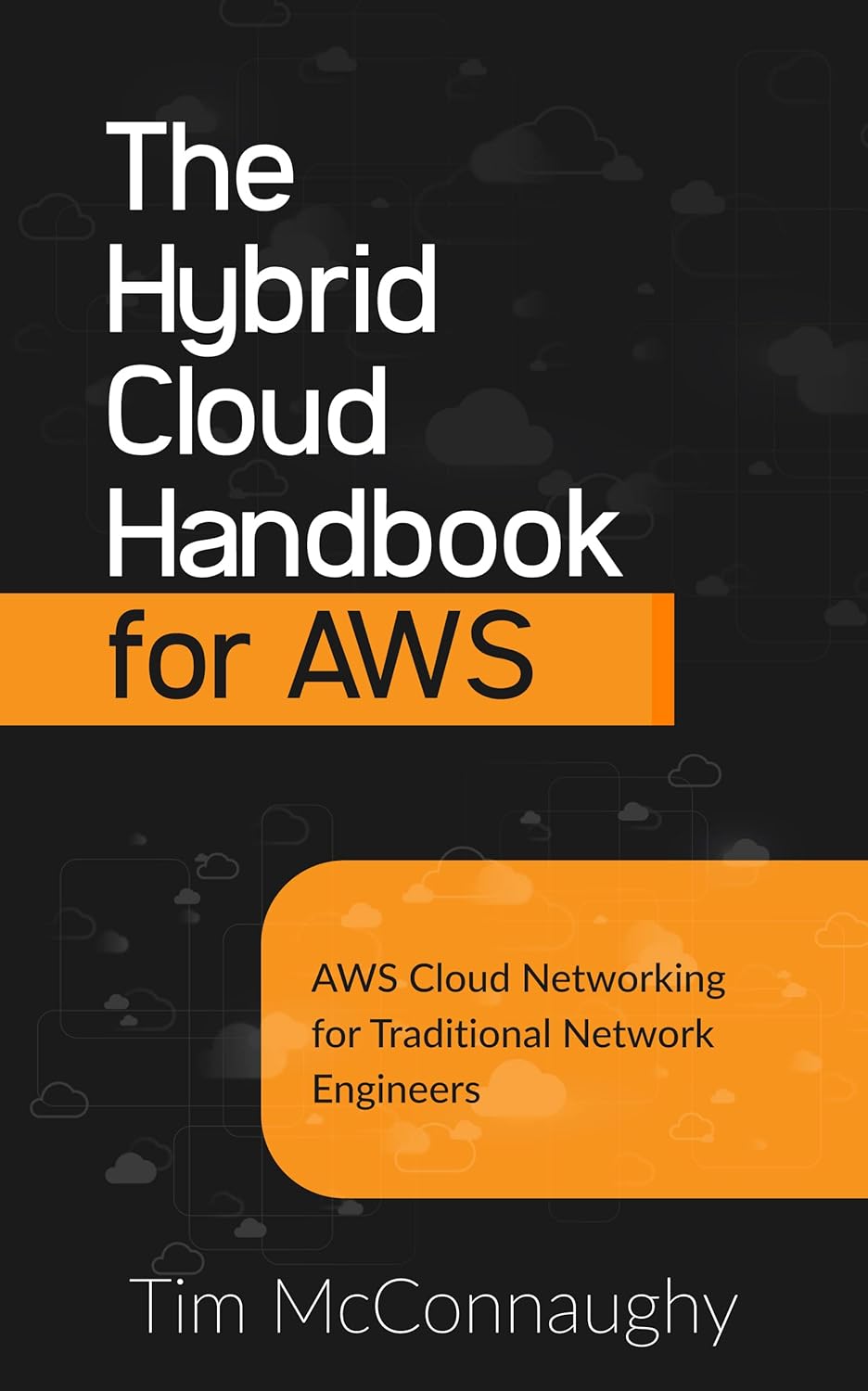
The Hybrid Cloud Handbook for AWS: AWS Cloud Networking for Traditional Network Engineers
Price: $5.50
(as of Nov 23,2024 12:44:13 UTC – Details)
ASIN : B0BWHNWR3Q
Publisher : Carpe DMVPN (February 27, 2023)
Publication date : February 27, 2023
Language : English
File size : 8247 KB
Simultaneous device usage : Unlimited
Text-to-Speech : Enabled
Screen Reader : Supported
Enhanced typesetting : Enabled
X-Ray : Not Enabled
Word Wise : Enabled
Print length : 200 pagesCustomers say
Customers find the book well-written, concise, and perfect for engineers. They appreciate the author’s effective comparisons between traditional networking and cloud networking. Readers also say the book provides a level of detail and gets to the point.
AI-generated from the text of customer reviews
Are you a traditional network engineer looking to expand your skills to the cloud? Look no further than The Hybrid Cloud Handbook for AWS: AWS Cloud Networking for Traditional Network Engineers. In this comprehensive guide, you will learn everything you need to know about setting up and managing AWS cloud networking, including:– Understanding the basics of AWS networking
– Configuring VPCs, subnets, and security groups
– Setting up VPNs and Direct Connect for secure connections
– Implementing load balancing and auto-scaling for high availability
– Monitoring and troubleshooting your AWS networkWith step-by-step instructions and real-world examples, this handbook will help you make a smooth transition to the cloud and take full advantage of AWS’s powerful networking capabilities. Don’t let the cloud intimidate you – with The Hybrid Cloud Handbook for AWS, you’ll be a cloud networking expert in no time.
#Hybrid #Cloud #Handbook #AWS #AWS #Cloud #Networking #Traditional #Network #Engineers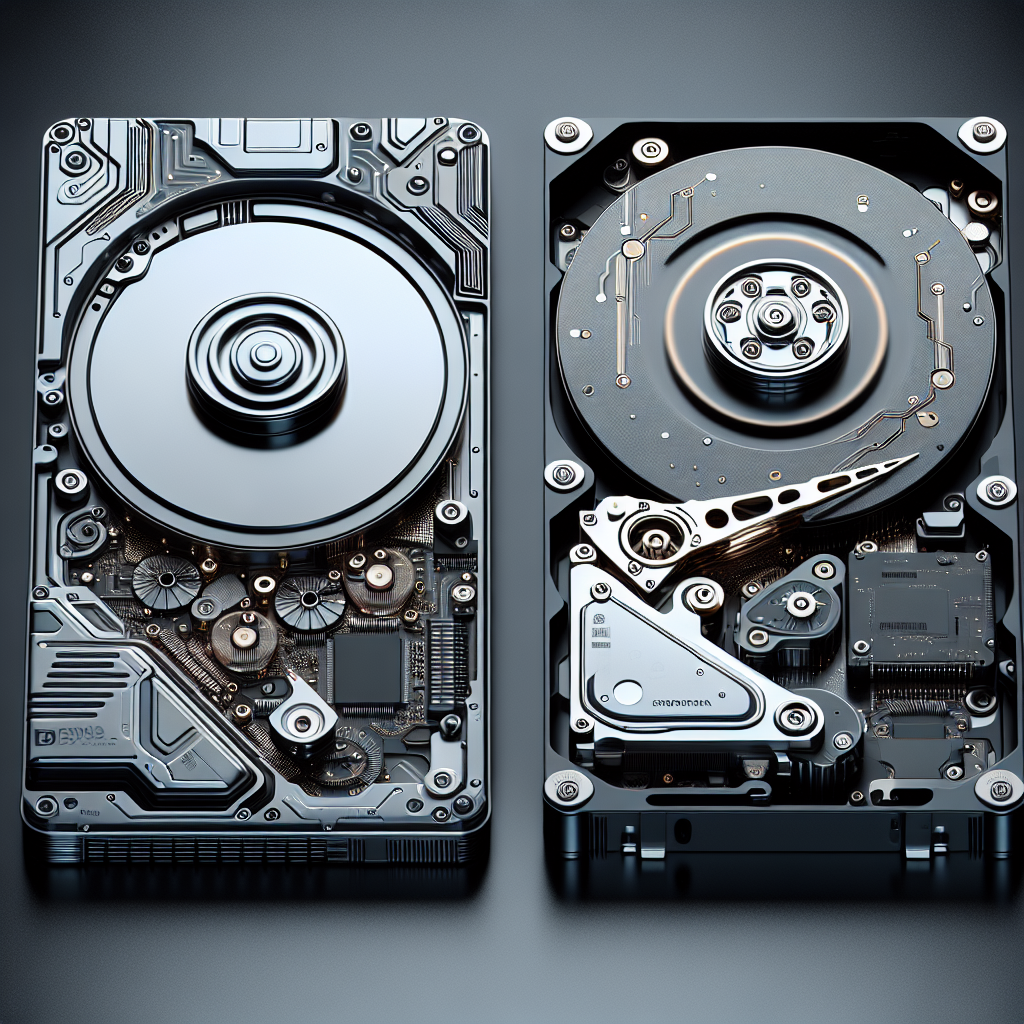
The Future of Storage: Solid-State Drives vs. Traditional Hard Drives
In the world of technology, storage devices play a crucial role in storing and accessing data. For years, traditional hard drives have been the go-to option for storing large amounts of data. However, with the advancements in technology, solid-state drives (SSDs) are becoming increasingly popular as an alternative storage solution.Traditional hard drives, also known as hard disk drives (HDDs), have been around for decades and are known for their reliability and affordability. HDDs use spinning disks to store data, which can lead to slower read and write speeds compared to SSDs. Additionally, HDDs are more prone to mechanical failures due to the moving parts inside the drive.
On the other hand, SSDs use flash memory to store data, which results in faster read and write speeds. This means that SSDs can boot up faster, load applications quicker, and provide a more responsive computing experience overall. Additionally, SSDs are more durable and reliable than HDDs since they do not have any moving parts that can fail.
One of the main drawbacks of SSDs is their higher cost per gigabyte compared to HDDs. However, as technology advances and production costs decrease, the price difference between SSDs and HDDs is becoming less significant. Many consumers are willing to pay a premium for the increased speed and reliability that SSDs offer.
In terms of capacity, HDDs still have the upper hand as they can store more data for a lower cost. However, SSDs are catching up quickly, with higher capacity drives becoming more affordable and widely available.
The future of storage is moving towards SSDs as the primary storage solution for both personal and enterprise use. As technology continues to evolve, SSDs will become more affordable, faster, and more reliable than ever before. While HDDs will still have a place in the market for storing large amounts of data at a lower cost, SSDs are the future of storage for those looking for speed, reliability, and performance.
In conclusion, the future of storage is solid-state drives. With their faster speeds, increased reliability, and decreasing costs, SSDs are becoming the go-to option for storing data. While traditional hard drives still have their place in the market, SSDs are leading the way in innovation and performance. It’s only a matter of time before SSDs become the standard storage solution for all computing needs.
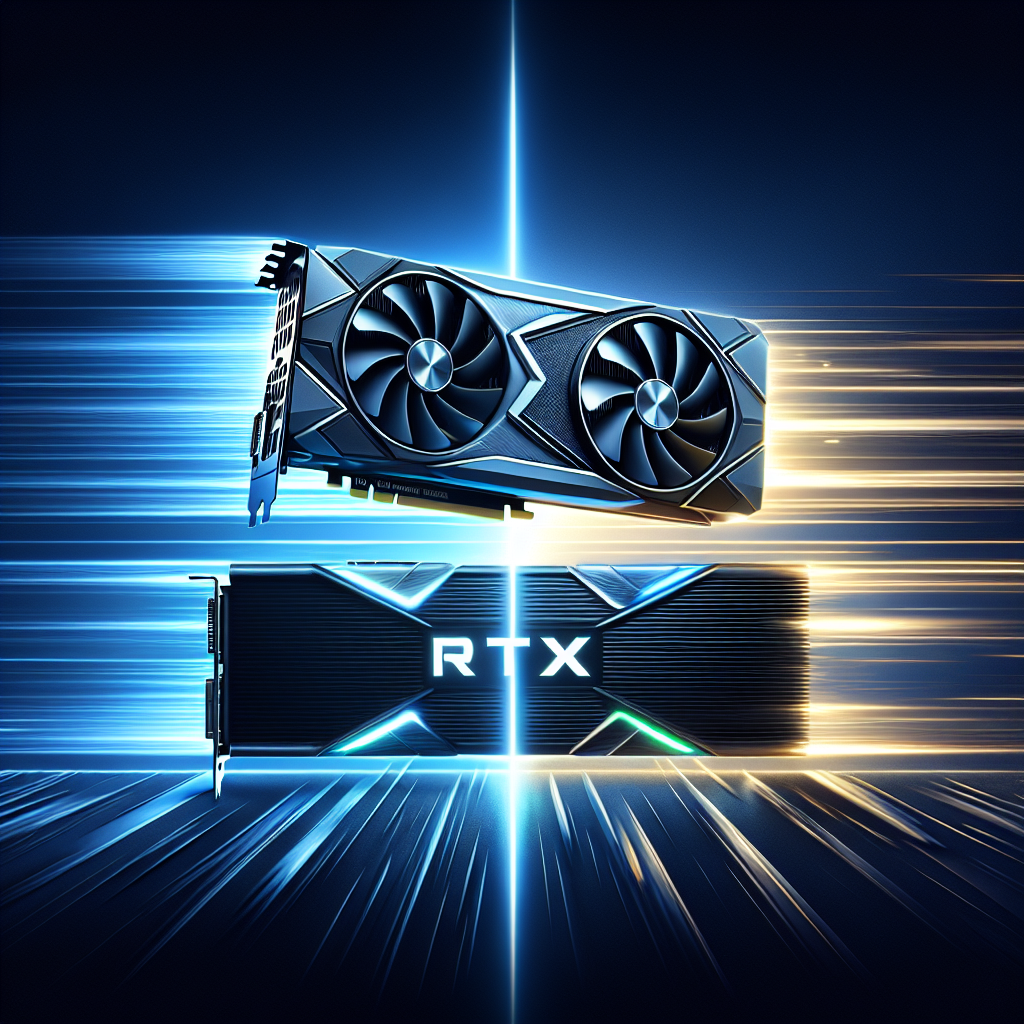
RTX vs. Traditional Graphics: A Comparison of Features and Performance
When it comes to choosing a graphics card for your gaming rig, there are two main options to consider: traditional graphics cards and RTX graphics cards. But what exactly sets these two types of cards apart, and which one is the best choice for your needs? In this article, we will compare the features and performance of RTX graphics cards with traditional graphics cards to help you make an informed decision.RTX Graphics Cards:
RTX graphics cards are the latest generation of graphics cards from Nvidia that feature ray tracing technology. Ray tracing allows for more realistic lighting, reflections, and shadows in games, resulting in a more immersive gaming experience. RTX cards also include DLSS (Deep Learning Super Sampling) technology, which uses AI to upscale lower resolution images to higher resolutions without sacrificing performance.
One of the main benefits of RTX graphics cards is their ability to deliver smooth frame rates at high resolutions, making them ideal for 4K gaming. RTX cards also support features like real-time ray tracing and AI-powered anti-aliasing, which can significantly improve the visual quality of games.
Traditional Graphics Cards:
Traditional graphics cards, on the other hand, do not have ray tracing technology and are typically more affordable than RTX cards. While traditional cards may not offer the same level of visual fidelity as RTX cards, they are still capable of delivering solid performance in most games.
Traditional graphics cards are a good choice for gamers on a budget or those who do not prioritize cutting-edge graphics technology. These cards are also suitable for gamers who play at lower resolutions or do not require the highest graphical settings in their games.
Comparison of Features and Performance:
When comparing RTX graphics cards with traditional graphics cards, it is clear that RTX cards offer superior performance and features. The inclusion of ray tracing technology and DLSS in RTX cards allows for more realistic and immersive gaming experiences, especially at higher resolutions.
RTX cards also tend to have higher frame rates and better overall performance compared to traditional cards, making them a better choice for gamers who prioritize graphics quality and smooth gameplay. However, it is essential to note that RTX cards are typically more expensive than traditional cards, so budget-conscious gamers may need to weigh the cost against the benefits of RTX technology.
In conclusion, RTX graphics cards offer superior performance and features compared to traditional graphics cards, thanks to their ray tracing technology and AI-powered features. While RTX cards may come at a higher price point, they provide a more immersive gaming experience and better overall performance, making them the preferred choice for gamers who want the best graphics quality possible.
